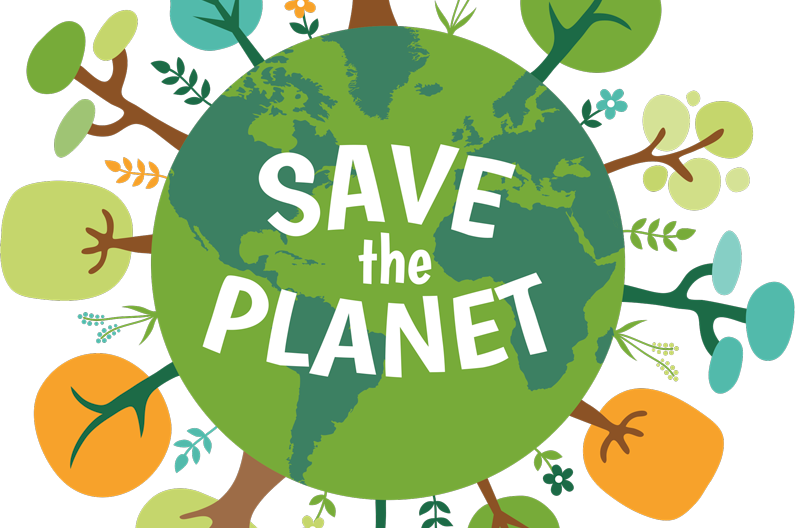
BY MENGESHA AMARE
The planet has now been home to over seven billion inhabitants being separated from water bodies, which have accounted for three-fourth of its portion. Though its populaces have been securing what they have demanded in life, they have equally given their home hard time and recurrently forced to taste the miserable facets of their artificial actions.
Combined with the unforeseen and unbearable or sometimes tolerable natural hazards, human activities such as wood extraction, cattle overgrazing, deforestation, large small-scale agriculture, grazing expansions, forest clearing for settlement among others are these days highly attributable to the severe danger of the ecosystem and biodiversity.
The world over is taking measures to manage and maintain the potential ecosystems although outcomes are not witnessed as expected. Some forest vegetation in some world countries are given on concession for joint government and community management in which local communities are organized and encouraged to work and obtain benefits out of forest products.
Worse even, due to lack of data and systematic monitoring, it is difficult to portray magnitude of annihilation on biodiversity of all sorts across the globe rather than merely observing what is happening on it following the disparaging actions of human beings on the ecosystem of planet earth. The case of our country –Ethiopia is not exceptional in this regard.
Located in the horn of Africa stretching from 3oN to 15oN latitude and from 33oE to 48oE longitude, Ethiopia is a country of great geographic diversity with wide altitudinal and physiographic variations.
It is also well recognized that the altitude of Ethiopia ranges from 116 meters below sea level in the Danakil Depression in Afar state to the highest peak of 4,620 meters above sea level on Mount Ras Dashen in Amhara state.
True, Ethiopia is endowed with diverse ecosystems in which diverse flora and fauna as well as microbial resources are found.
This writer had a stay with Demena Woldetnsae, and environmentalist graduated from Addis Ababa University and talked about the significance of biodiversity and measures to be taken with a view to taking care of it. He said, “The performances recorded since the recent reform, which has been centering green legacy corroboration, have attributed to improved communications between the focal institute and stakeholders, increased commitment of the government in the areas of conservation and sustainable use of biodiversity, and access and benefit sharing issues, and improved awareness of the public and decision makers on the importance of biodiversity for human wellbeing and the country’s development.”
As to him, these achievements have contributed towards improving livelihoods of the people and overall national development; other countries of the world shall follow suit.
According to Demena, forest conservation, recurrent tree seedlings plantation, sustainable utilization and development of biodiversity, familiarization and mainstreaming of the sustainable ecosystem means to different sectors in Ethiopia will remain the top priorities of implementation of the country’s plan for coming up with resilient green economy.
As Ethiopia is one of biodiversity rich countries in the world, it possesses a great diversity of wetland ecosystem such as swamps, marshes, flood plains, natural or artificial ponds, high mountains lake and micro-dams as a result of formation of diverse landscape subjected to various tectonic movements, a continuous process of erosion, and human activities, he added.
One is tired of listing what does Ethiopia have in all aspects, he said, for instance, the different geological formation and climatic conditions have endowed Ethiopia with a vast water resources and wetland ecosystem including river basins, major lakes and many swamps, floodplains, and manmade reservoirs with a total huge annual surface runoff.
“A number of promising activities have been undertaken to conserve biodiversity in Ethiopia, indeed, in a bid to contribute what is expected of Ethiopia to the wellbeing of the planet. Participatory forest management activities have had noticeable and immediate impacts such as relocation of previous forest dwellers outside of the forest, reduced illegal forest cutting and collecting, avoiding overgrazing and attaching due emphasis to mother planet via planting a number of tree seedlings like what Ethiopia is doing now,” he underscored.
Legislations and regulations on regional forest development and use, policy, regulation and strategies on forest development and conservation in Ethiopia were devised and implemented within the past few years with a view to contributing to the sustainable use of the country’s biodiversity. Moreover, reduced emissions from deforestation and forest degradation, is evolving as an integral part of a wider green economic growth, through the Climate Resilient Green Economy (CRGE) and a policy environment targeting at promoting reforestation and afforestation.
Undeniably, Ethiopia is the second most populous country in Africa next to Nigeria with over 110 million people and annual population growth rate of more than two percent. Besides, it has great geographic diversity, and macro-and micro-climatic variability.
As the result, the country is endowed with great diversity of plant, animal and microbial genetic resources, and these play significant roles in conservation, recreation, eco-tourism and employment as provide the nation with direct and indirect annual economic values out of protected areas.
Demena further underscored the two fundamental causes of biodiversity forfeiture; the main direct threats to Ethiopia’s biodiversity are habitat conversion, unsustainable utilization of biodiversity resources, invasive species,
replacement of local varieties and breeds, climate change and pollution, and indirect causes of biodiversity loss in the country are demographic change, poverty, and lack of awareness and coordination.
Due to these direct and indirect pressures, ecosystems and a number of wild plants and animals including endemic species, as well as farmers’ varieties and indigenous animal breeds are dwindling, he said.
However, viable mechanisms have been devised to reverse this trend. As a result, significant improvements in the status of some biodiversity resources have been achieved. Rehabilitation and restoration of degraded areas, afforestation and practices of sustainable management of natural resources such as tree seedlings plantation campaign have, for example, resulted in increased forest cover and enhancement of the associated biodiversity, as to him.
As to Demena, raising public awareness and that of decision makers on biodiversity issues has been conducted using various mediums at different times and levels. Experience sharing programs among national regional states on soil and water conservation activities and scaling-up of the best practices is one the other successful examples emanating from the vigorous awareness raising activities.
He said, “Biodiversity issues need to be mainstreamed into different sectors such as tourism, education and energy, and institutional frameworks, and instituitons shall be set up to effectively implement conservation, sustainable use and development of biodiversity, and ensure fair and equitable sharing of benefits accrued from access of the nations’ genetic resources in particular and the entire world in general.”
Demean explained that biodiversity conservation provides population in all countries of the earth with, among others, safe ecosystem services, healthy and decent work environment, productive posterity, prolonged life span thereby coming up with a fertile, suitable for working and living as well as an inviting world. Creating such an ideal earth plays an invaluable role in ensuring food security and sustainable livelihoods for millions of billions of households throughout the planet. Hence, one can confidently say that properly eyeing at biodiversity is an incomparable and viable means for prolonging life on earth.
In a nut shell, as nurturing biodiversity and ecosystem through applying multifarious environmental services is a matter of life, consolidating ecological functions such as watershed protection, forest conservation, soil stabilization and erosion control, provision of clean water and associated filtration and storage functions, climate stabilization and carbon sequestration, combatting desertification, expanding afforestation have to receive due attention more than ever before as they are instrumental in rescuing the planet.
The Ethiopian Herald August 10/2021




